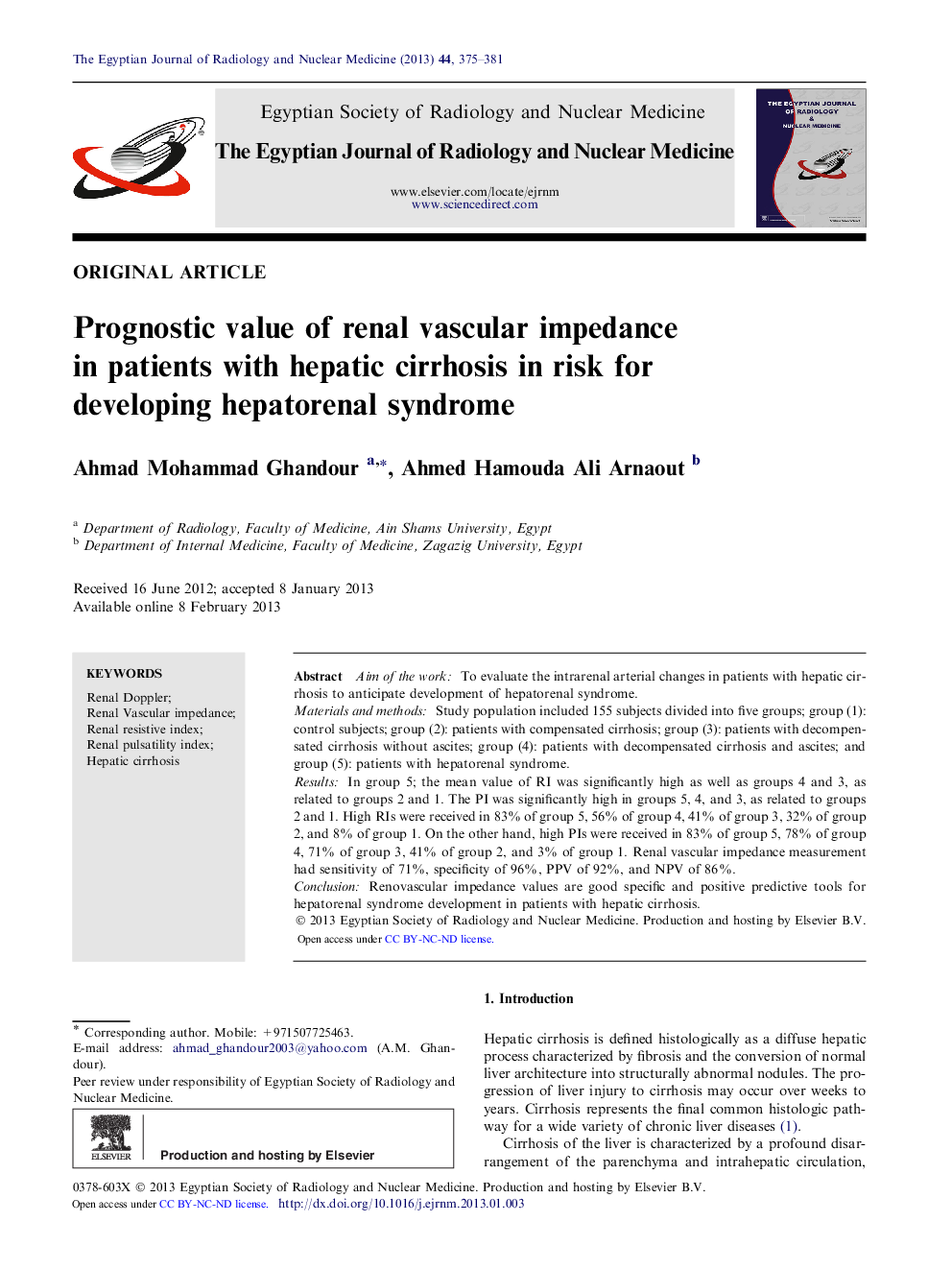| Article ID | Journal | Published Year | Pages | File Type |
|---|---|---|---|---|
| 4224361 | The Egyptian Journal of Radiology and Nuclear Medicine | 2013 | 7 Pages |
Aim of the workTo evaluate the intrarenal arterial changes in patients with hepatic cirrhosis to anticipate development of hepatorenal syndrome.Materials and methodsStudy population included 155 subjects divided into five groups; group (1): control subjects; group (2): patients with compensated cirrhosis; group (3): patients with decompensated cirrhosis without ascites; group (4): patients with decompensated cirrhosis and ascites; and group (5): patients with hepatorenal syndrome.ResultsIn group 5; the mean value of RI was significantly high as well as groups 4 and 3, as related to groups 2 and 1. The PI was significantly high in groups 5, 4, and 3, as related to groups 2 and 1. High RIs were received in 83% of group 5, 56% of group 4, 41% of group 3, 32% of group 2, and 8% of group 1. On the other hand, high PIs were received in 83% of group 5, 78% of group 4, 71% of group 3, 41% of group 2, and 3% of group 1. Renal vascular impedance measurement had sensitivity of 71%, specificity of 96%, PPV of 92%, and NPV of 86%.ConclusionRenovascular impedance values are good specific and positive predictive tools for hepatorenal syndrome development in patients with hepatic cirrhosis.
